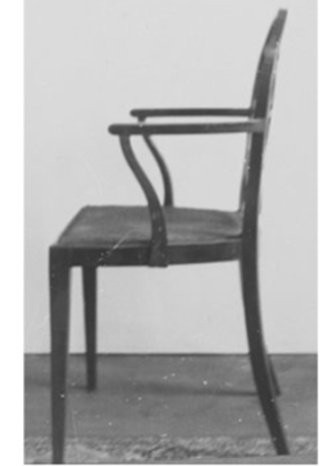We find prior art in a lot of unconventional places. Sitcoms, Pop culture magazines, FCC ID databases, Internet archives – Well, almost every place where you would least think of finding prior art. Having have found the impossible from places unimaginable, we were a bit awed when we found prior art in a Museum. Albeit an online museum, but a museum nonetheless.
Let me narrate what exactly happened.
It was a hot summer day, the sun at its peak, and having just arrived at the office when the clock struck twelve, I couldn’t wait to get to my chair. The transit took its toll on me and I was weary from the heat. Ten more steps before I could relax on my ergonomic – and what appeared to be highly comfortable – chair adjusted to the height that makes sitting long hours a breeze. Man, I loved my chair!
Five seconds later, I was sitting on it but something felt wrong. Very wrong. Someone had meddled with my chair. It wasn’t comfortable anymore. I decided to adjust the height with the lever but no matter what I did, it wasn’t good enough. Five minutes and a ton of wasted energy later, I decided to go with the flow.
My outlook pinged with the incoming mail from my manager. We were supposed to find prior art to invalidate a design patent for a decorative chair.
The design was very tricky – having a ring-shaped structure embedded in a circular backrest, thin legs having ornamental rings on its surface, back legs slanted outwards, etc. Not your conventional chair.
To counter that, I focused on US design and Locarno classifications as they seemed to be the best hit-point to be looked upon. As the evening became night and having analyzed 36000 results, I couldn’t spot a good prior-art.
There should be another way to do this. There is no way I am giving up on two chairs in a day.
We still had two more days before we were supposed to send the final set of findings.
The odds of finding prior art, in this case, wasn’t great. But we weren’t giving up either.
During the transit to work the next day, I was deep in introspection. The only question I had in my mind was – Where could I find prior art that would invalidate the design?
As the bus came to a sudden halt, and everyone in their seats jerked forward, it was at that very moment that I noticed the cover of the book my co-passenger was busy reading. Antiques Chop. Now, call it a result of deep introspection or an accidental insight, I had my Eureka! moment.
It occurred to me that the design of the chair does resemble something antique. While watching historical documentaries/shows, I remember such kind of chairs being prominently used. Maybe I could find prior art for that design in antique collections.
I couldn’t wait to get to work. As I began to settle down, something felt different. In a good sense. My chair. It felt right again. It was adjusted just the way I like it. How did that happen? Doesn’t matter.
With a wide grin all over my face, I got to work. I began searching for designs in online Museums and art/antique collections.
In the initial hours of searching on these old-golds’, I was amazed at the resulting quality they provided. It’s quite unbelievable – but I was able to identify substantial prior-art that existed even before 200 years. Like one of these designs.
And that one.
(Child’s Chair dated back to 1855)
Before the end of the day, we found Tier-I result that invalidated the design patent at hand. It was time to convey the news to the client. When he heard the news, he was more than happy. We were excited too, as we didn’t fail to meet the expectations set for us. Also, by the end of the day, when I was discussing the mystery of the adjusted chair with my colleagues, it was demystified.
Apparently, someone took my chair yesterday and I was sitting on another chair. A similar one but less comfortable given the adjustment of the lever. They did not find it any comfortable either and returned my chair and took theirs back.
I wonder why that didn’t occur to me in the first place.
Analysis Performed by: Nilesh Singh, Senior Research Analyst, Search Team.












